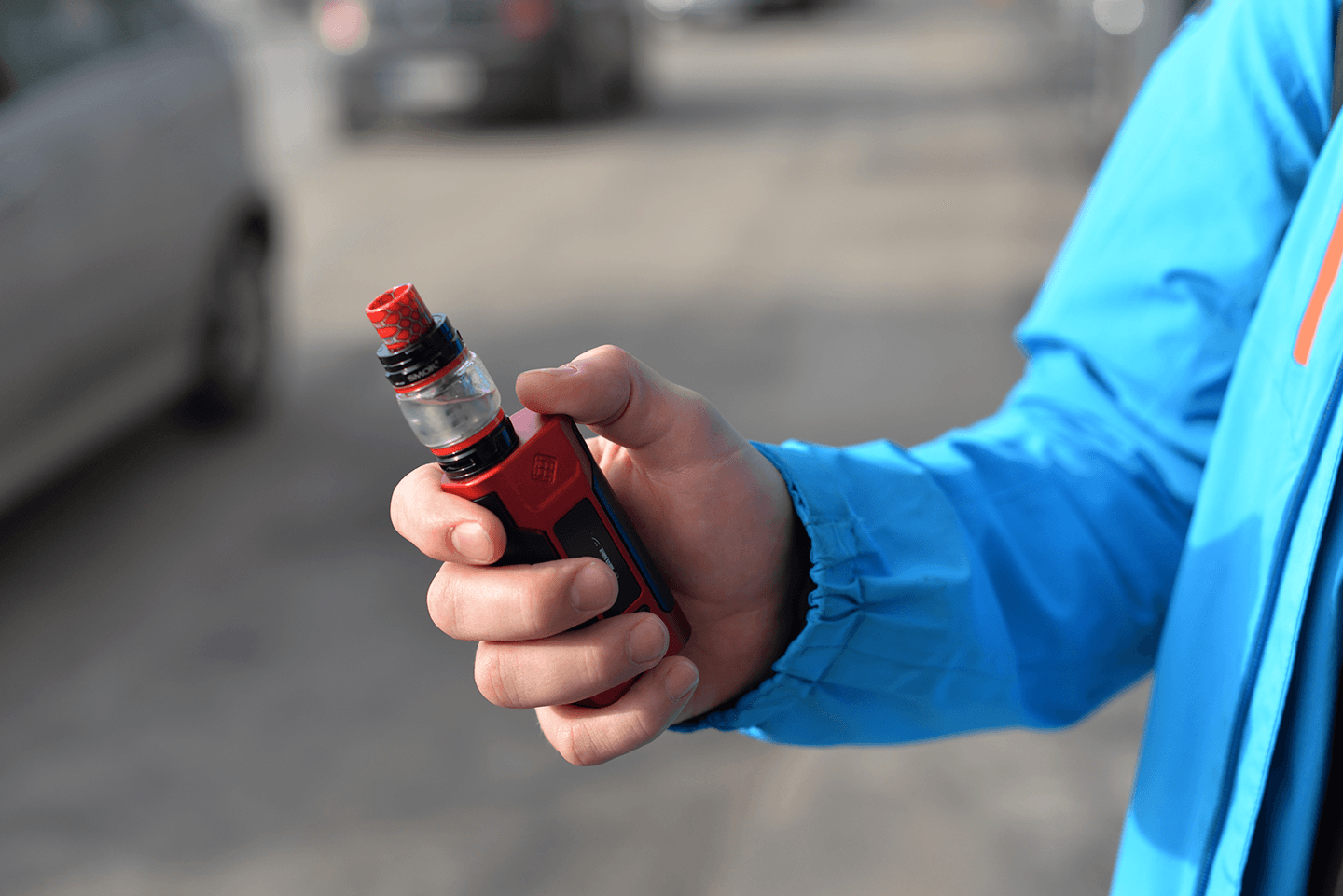E-cigarettes
An e-cigarette is an electronic device emitting vapour with many substances that have harmful health effects.

E-cigarettes are battery-powered devices that imitate regular cigarettes and that vapourise the liquid in their tanks.
Although e-cigarettes do not contain dried tobacco plant, they are regulated by the Tobacco Act. For instance, sales restrictions and smoking bans defined in the act also apply to e-cigarettes.
E-cigarettes may contain nicotine, which causes addiction, or be nicotine-free. Studies have shown that the nicotine content of different liquids vary a great deal. Nicotine has also been found in e-cigarette liquids labelled as nicotine-free.
The composition of the liquids used in e-cigarettes vary but in practice, all contain, in addition to water, propylene glycol and/or glycerol. When heated, glycerol generates acrolein that is also used as herbicide and is known to be one of the carcinogens in cigarette smoke.
In addition, various flavour additives, such as menthol, are used in e-cigarettes. The purpose of flavour additives is to make the vapour taste more pleasant.
A toxic substance called diethylene glycol, pharmaceutical substances and heavy metals have also been found in e-cigarette liquids. Furthermore, e-cigarettes contain carcinogenic nitrosamines that are characteristic of tobacco, but in lower concentrations than in cigarette smoke.
E-cigarettes have been on the Finnish market since 2003. In 2018, e-cigarettes were used by 2 per cent of 20–64-year-old men and less than 1 per cent of 20–64-year-old women. In 2019, the daily use of e-cigarettes was 4 per cent among boys in the upper grades of comprehensive school, 1 per cent among boys in upper secondary schools and 6 per cent among boys in vocational institutions. The corresponding figure for girls was less than 2 per cent in all of these groups.
Unlike when smoking regular cigarettes, there is no burning reaction in e-cigarettes. However, the amount of fine and ultrafine particles in the vapour-like aerosol formed by e-cigarettes is equal to or higher than the amount produced when smoking regular cigarettes. According to current knowledge, e-cigarette vapour impairs pulmonary function and promotes changes that expose the person to cardiovascular diseases.
There are efforts made to make e-cigarettes appear as a harmless tool for quitting smoking, which is not true. Due to the nicotine content of e-cigarette liquids, it may be difficult for the user to break free from their nicotine addiction. Read more about e-cigarettes on THL’s website.

